On Dec. 13, Army Maj. Amanda Feindt’s 4-year-old daughter woke up before dawn with uncontrollable vomiting, severe abdominal pain and diarrhea.
Within a few hours, Amanda’s husband Patrick was taking their little girl to the emergency room at Tripler Army Medical Center in Honolulu, Hawaii. The Feindts, like thousands of other military families, had learned that their water was likely contaminated with jet fuel that leaked from a Navy fuel storage facility weeks before. Amanda and Patrick suspected that their daughter’s illness could be attributed to the water contamination, though they weren’t sure how; they’d been told by the Navy that the water for their Ford Island neighborhood was fine.
The doctor who saw their daughter, however, had other concerns. Even though they were no longer actively drinking the poisoned water, the doctor said they and their children could still be exposed to the chemicals if they were using items like plastic sippy cups or linens that had been washed with the contaminated water. It was the first time anyone had told them that — and all they could think about was their child’s daycare center, which both their children attended daily and had plenty of those items on hand.
As soon as Amanda heard what was happening with her daughter, she contacted the child development center, and explained what the medical staff had told her about the porous materials. The staff at the daycare had not heard about that issue, but said they would try to find an answer. It was the final straw. “I said okay, I am not gambling on my family’s lives anymore.”
“I became just mad that I’m being told this as an individual, but we’ve got 250 kids in this school and all their staff … and they’re not being told this by Navy leadership,” Amanda said. “No one is being told this by Navy leadership. Like, where is the Navy on all of these things?””
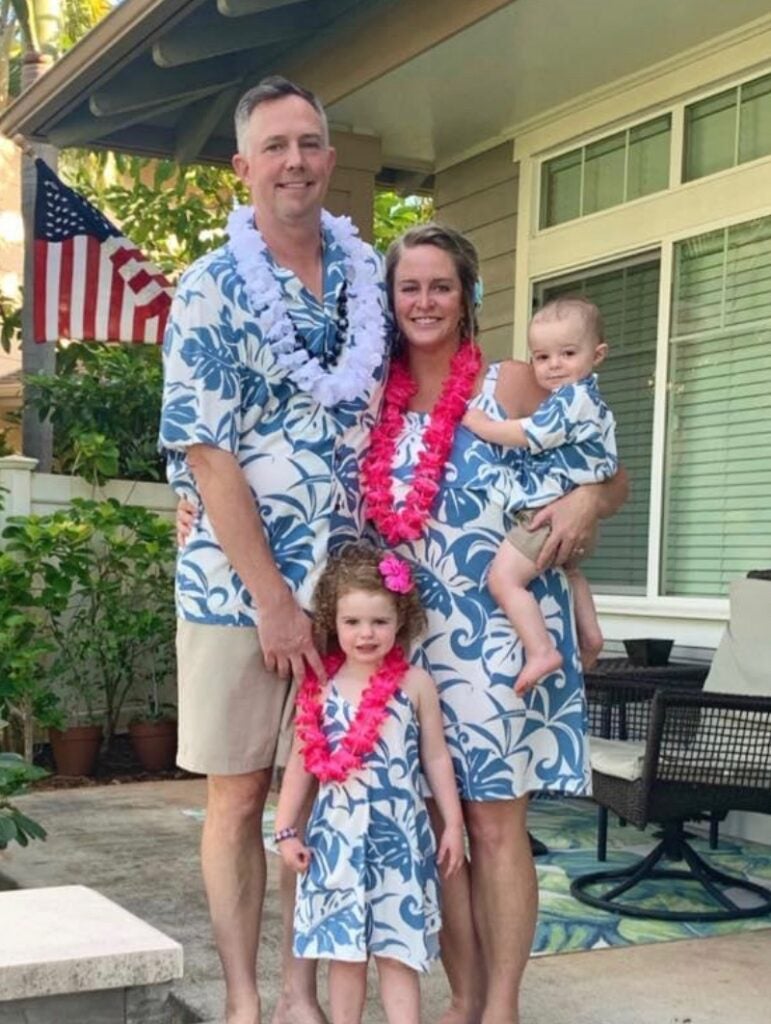
While still on the phone with the daycare center, Amanda informed them she was temporarily withdrawing her kids until the water issue was resolved. The same morning, Amanda received another email, this time from her boss. He’d been calling base leaders attempting to get answers for her family; specifically, what were the results of the Navy’s water test of the Ford Island Child Development Center, which her children attended for 10 hours every Monday through Friday?
While her boss told her they may be able to get some answers, he said the Navy wasn’t sure they’d tested the Ford Island Child Development Center yet, calling it “unbelievable.”
Amanda was fed up. She called Navy Capt. Anthony Pecoraro, the chief staff officer for Joint Base Pearl Harbor-Hickam. She brought him up to speed and then asked for the test results. He deflected the question, she said, and referred her to someone else. But they were “past that,” Amanda said. They’d spoken personally before, and she was tired of getting the runaround. If he didn’t have the answers, who would?
He was “really stand-offish,” Amanda said. Though she admitted she was beside herself. Her 4-year-old was sick, and her 1-year-old had been taken to the hospital just two days prior, yet Amanda didn’t have any answers for the doctors. She was crying on the phone to Pecoraro, in “complete hysteria,” and lost “all military bearing.” When another official, Air Force Col. Michael Staples, the deputy commander of Joint Base Pearl Harbor-Hickam, joined the call, Amanda said she repeated her request, only to be told to submit a Freedom of Information Act request for the water test results, a tedious process that usually takes weeks if not months. The Navy did not respond to a request for comment regarding Staples’ remarks.
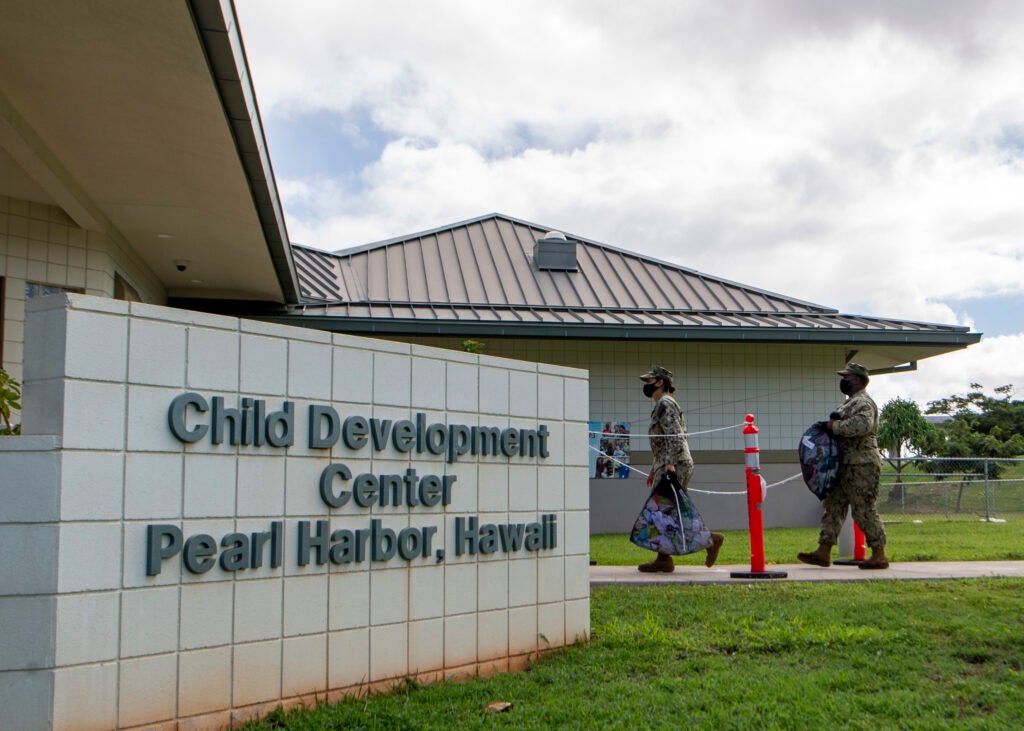
“I was just a mom at that point, like begging for answers,” said Amanda, who made clear to Task & Purpose she was not speaking on behalf of the Army. “I was so angry, so mad that the Navy felt that they reserved the right to hold on to these answers about my children. My children were in the hospital. Like, how dare they?”
The emergency room visit that Monday was the culmination of weeks of fighting with the Navy to get answers about what her children were exposed to, as the military worked to contain a massive water contamination issue. On multiple occasions, Amanda spoke with base officials or the director of the child development center and asked for the results of water tests and assurances that the Navy was addressing parents’ concerns. Each time, she claimed she was either lied to or given more concerning information that undercut her trust in Navy officials.
This report is based on first-hand accounts, emails about the water crisis between affected service members and military officials, public announcements, official statements, and supported by existing reporting by Task & Purpose and other news sources. Task & Purpose made repeated and detailed inquiries to base officials and Navy personnel named in this report.
In response to detailed questions from Task & Purpose, Navy Lt. Cmdr. Marissa Huhmann said it was “important to note that information provided to our residents, our communities, the public and the media was accurate at the time” it was given.
“The water situation continued to evolve and as it did, we communicated new information as it became available,” Huhmann said.
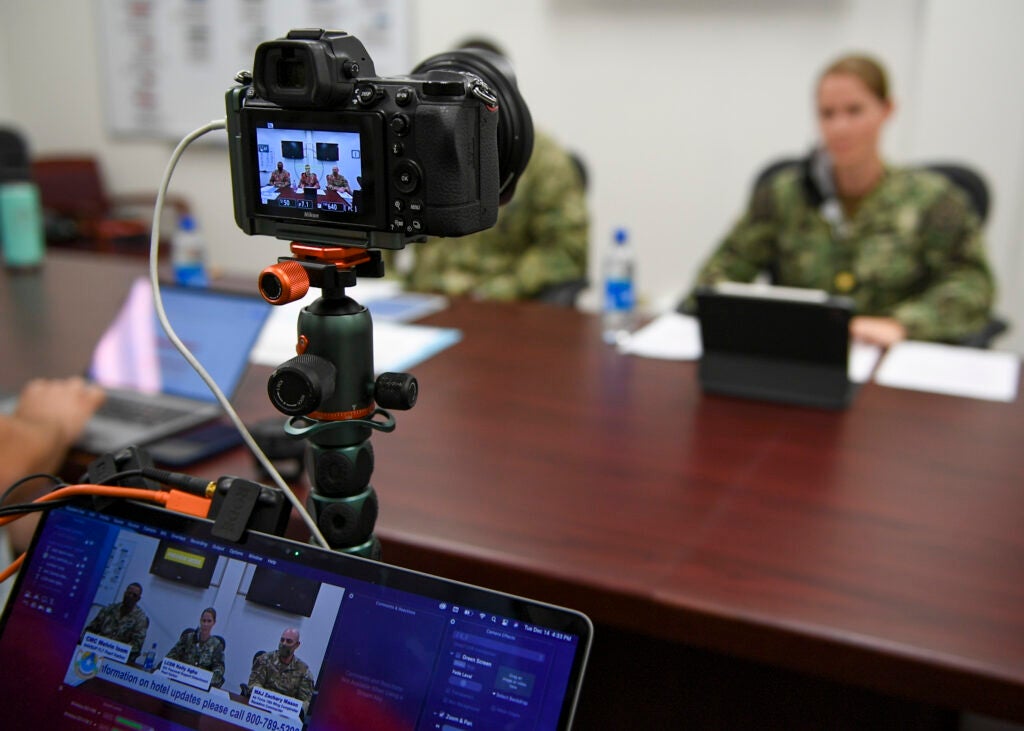
Although this report focuses on the Feindts and their experience, they are not the only family facing similar problems. The child development center that they use also cares for more than 200 other military children, and many more families around the base and in the surrounding communities have complained of illness and fear of exposure, and voiced concerns with how Navy leaders have handled the situation.
“I volunteered for this, right?” Amanda said. “I signed up, volunteering to serve our country after 9/11 happened. Me. And with that I know comes risk, and I know comes potentially being in harm’s way … but now I’m having to put my kids on a registry? My kids didn’t volunteer for this.
“My kids did not volunteer to be poisoned.”
“We’re considering getting the hell out of here as quickly as possible”
While Navy officials have said publicly that they first started getting reports on Nov. 28 from on-base residents of water that smelled like chemicals or fuel, and looked like it had an oily sheen to it, the problem may have started at least a week prior.
In a press release on Nov. 21, the Navy said they were investigating “a water and fuel mix release” of 14,000 gallons that occurred the day before at the Red Hill Bulk Fuel Storage Facility. The pipe “i??s not connected to the Red Hill Fuel tanks or main fuel pipelines,” the release said, adding that there were “no signs or indication of any releases to the environment, and the drinking water remains safe to drink.”

Yet the Feindts said they first began experiencing symptoms like dizziness, nausea, fatigue, headaches, diarrhea, and extreme abdominal pain in early November. And other residents claim they and their families experienced symptoms months before that. One Navy official told the Washington Post that he had a “working theory” that the current contamination was actually caused by a fuel release in May that was worse than the Navy originally disclosed.
Still, after the Navy began getting calls from residents reporting the water’s smell and appearance on Nov. 28, officials maintained that the water was safe to drink.
“I can tell you at this point that there are no immediate indications that the water is not safe,” Navy Capt. Erik Spitzer, the commander of Joint Base Pearl Harbor-Hickam, told base residents on Nov. 29. “My staff and I are drinking the water on base this morning, and many of my team live in housing and drink and use the water as well. … We have not recommended any schools be closed, and we have not sent out any notifications telling people to not use the water.”
That sentiment was echoed on Nov. 30, when residents received an email from the Ohana Navy Resident Portal, saying that the Navy had not detected any petroleum in their initial testing of the water. The same day, however, the Hawaii Department of Health recommended that “all Navy water system users avoid using the water for drinking, cooking, or oral hygiene.”
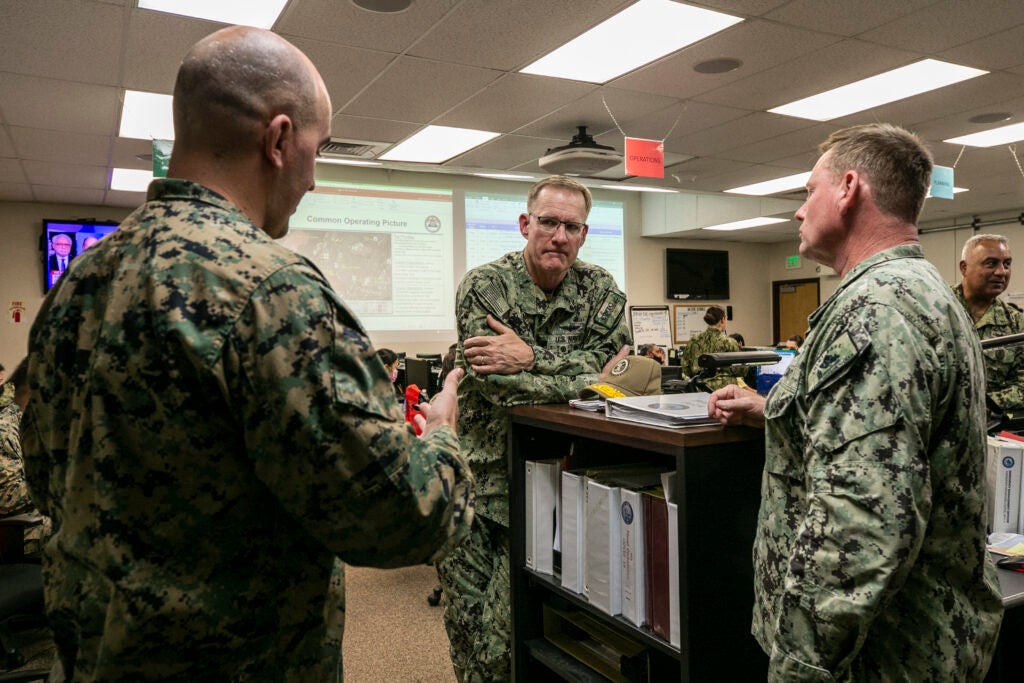
On Dec. 2, a Navy press release claimed that while the Navy detected petroleum products in its Red Hill well, it was “roughly four to ten times below the Hawaii Department of Health Environmental Action Level (EAL).” The takeaway residents had, according to Amanda, was that the water was still safe because of how low the traces of petroleum actually were. In fact, the Navy specifically noted that Amanda’s neighborhood and water on Ford Island was “verified” safe for use in an email sent the following day.
With that email, Amanda said she felt like the Navy was telling her not to worry about her water, so she didn’t. She and her family continued drinking, bathing in, and cooking with it in their home.
But on Dec. 6, the Navy’s tone changed abruptly. Capt. Spitzer, the base commander, said in a message through the Ohana Navy Resident Portal that the Navy “mistakenly felt the initial tests … meant we may drink the water.”
“We truly thought the testing results indicated the water was safe to drink,” Spitzer said. “We were wrong. I apologize with my whole heart that we trusted those initial tests. If there was one day I had a chance to do over, it would be that day. The words used in my notification were not the compassionate and validating words I wish were used, and I regret I did not tell our families not to drink the water. I am deeply remorseful.”
Another issue arose on Dec. 8. That evening, Joint Base Pearl Harbor-Hickam said on Facebook that children at the base’s child development centers had been receiving potable water and “operating with the water delivered by outside sources” since Nov. 29. “No tap water is being used in the center at this time,” the post said. Amanda didn’t understand why the Navy would have done that without notifying parents first. She also didn’t believe it was true.

She dropped off and picked up her kids every day and knew they drank from the water fountains. She also knew the routine for kids at the daycare amid the COVID-19 pandemic meant washing their hands regularly in the sinks at the center.
So that day when she went to pick up her children, she spoke with the director of the daycare. No, she claimed the director told her, we were not using potable water but we’re “testing every day.”
“She said, quote: ‘If you don’t hear, we’re in the clear,’” Amanda recalled, noting the director said the Navy had not provided them the test results. The director of the Ford Island Child Development Center did not respond to a request for comment.
Amanda’s concerns intensified when she received a flier on the door of her home the next day from the Army’s Task Force Ohana, which was established days after the first reports from families to help the Army respond to the crisis. In bold letters at the top of the flier, it said: “DO NOT USE THE WATER IN YOUR HOME.” The fliers were only left on the doors of Army families; her Navy neighbors did not receive one. The Feindts immediately stopped using the water.
The back-and-forth continued for days. On Dec. 9, Amanda visited the site of Task Force Ohana in hopes of getting help from her own service leaders about what was happening with the child development center’s water. Her joint command had been very supportive, and she felt confident in how Gen. Charles Flynn, commander of U.S. Army Pacific, and Maj. Gen. Joseph Ryan, commander of the 25th Infantry Division, were handling things. When she arrived, she said she spoke to Flynn’s executive officer and asked for help; later that day, he informed her that it had been resolved and outside water was now being delivered to the center.
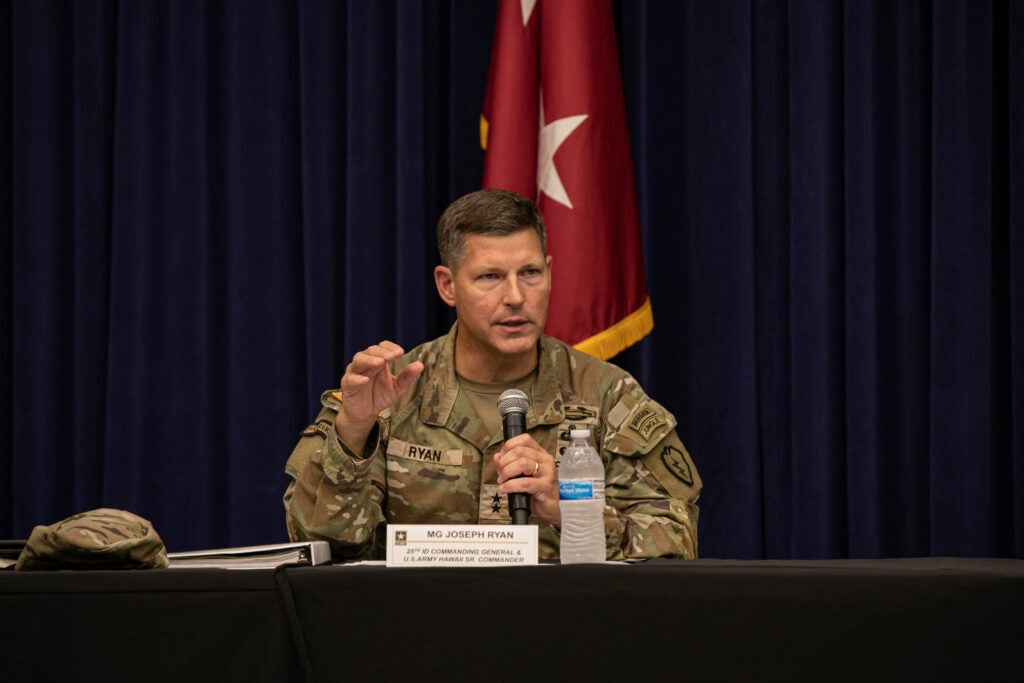
But the next day on Dec. 10, Patrick Feindt realized that the water was still being used at the child development center when he dropped his daughter off, and she immediately went to wash her hands upon entering the classroom. When they went to pick her up later in the day, Amanda said, the sinks and water fountains had finally been shut off.
What had happened was simple and damning: the Navy had not been providing outside water to the Ford Island child development center, despite telling families they had. In a meeting with Amanda, Capt. Pecoraro, the chief staff officer for the base, admitted that the Navy had “unfortunately missed” providing their child’s daycare center with clean water. “We missed it,” Pecoraro said.
“You missed knowing that Ford Island [Child Development Center] is part of Joint Base Pearl Harbor-Hickam CDCs?” Feindt asked. “It’s one of the largest CDCs on this island.”
“No, that’s not what I said,” he replied. “We missed making sure that the water was being delivered there … We did not get the water there, we identified that mistake after the fact. In fact, we identified it last night: ‘Oh my God, we’re not getting water to that CDC, even though we put that out.’”
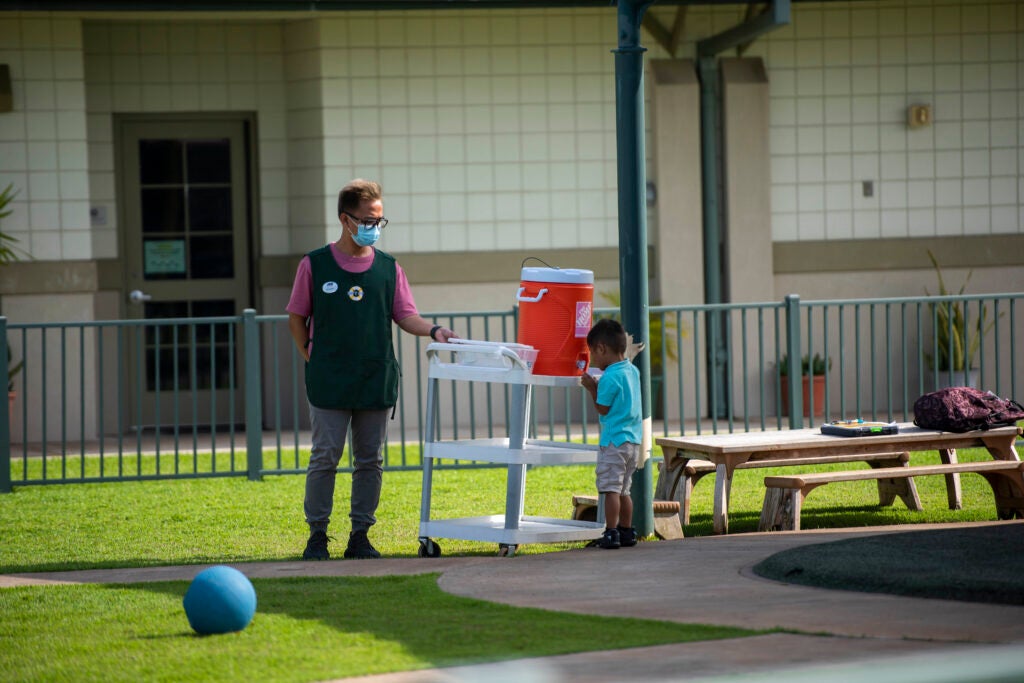
Pecoraro apologized repeatedly but said he was “hamstrung by bureaucracy” and could not release any updates until they were run up the chain of command.
Amanda asked why they hadn’t responded to military families’ questions on Facebook. In response, Pecoraro and another official who identified himself as the base’s director of Morale, Welfare, and Recreation (MWR) claimed they could say nothing since they were not public affairs officers.
“We have the gag order that we aren’t allowed to respond to Facebook,” Pecoraro said.
On Wednesday, the Navy denied putting a “gag order” on officials. “We are working to communicate often, clearly, and openly with all involved,” a statement said. Pocoraro did not respond to a request for comment.
That the Navy “missed” a child development center and had “additional exposures that were completely unnecessary and entirely preventable” is of significant concern, according to one expert.
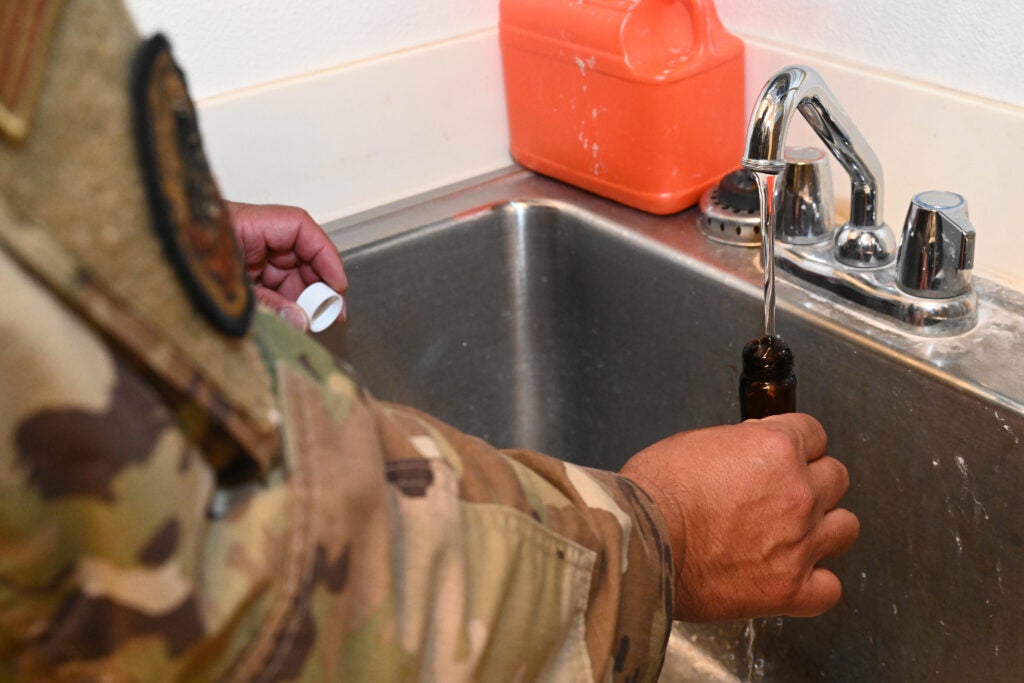
“I’ll be blunt, that’s egregious,” Dr. Wendy Heiger-Bernays, a clinical professor in the Department of Environmental Health at the Boston University School of Public Health, told Task & Purpose. “You have a situation where the state health department is telling the Navy, telling people living there, don’t use this water, and you have a child care center that continues to use it. Clearly, that is unacceptable, and those additional exposures — I mean you can’t account for the additional potential impact to those children.”
But in the end, the Navy did not issue a release about Ford Island’s child development center until Dec. 21 — almost two weeks after its previous guidance, which inaccurately stated that potable water had been provided since Nov. 29.
The day after her conversation with Pecoraro, Amanda’s husband started having severe migraines and he and their 1-year-old son both began vomiting. The diagnosis both received was suspected exposure to contaminated water, according to hospital records viewed by Task & Purpose. Two days later, the Feindts were back in the hospital with their daughter, and Amanda was crying on the phone, begging for answers from Navy leaders and pulling her children out of the child development center that she said they loved.
Amanda soon began to experience the same symptoms as the rest of her family — vomiting, diarrhea, and severe abdominal pain. The hospital record from that visit cites the reason for the appointment as “water contamination issues.” But when she called Pecoraro again that day, she said his tone had changed and he referred her elsewhere to find answers for her questions, and the base’s deputy commander told her to file a Freedom of Information Act request if she wanted test results for her children’s development center.
A constant in the long saga of conversations with Navy leaders was that the service had yet to send an update to families whose children attended the Ford Island child development center, and the center had not indicated if it would be getting rid of the same materials her daughter’s doctor warned them about.
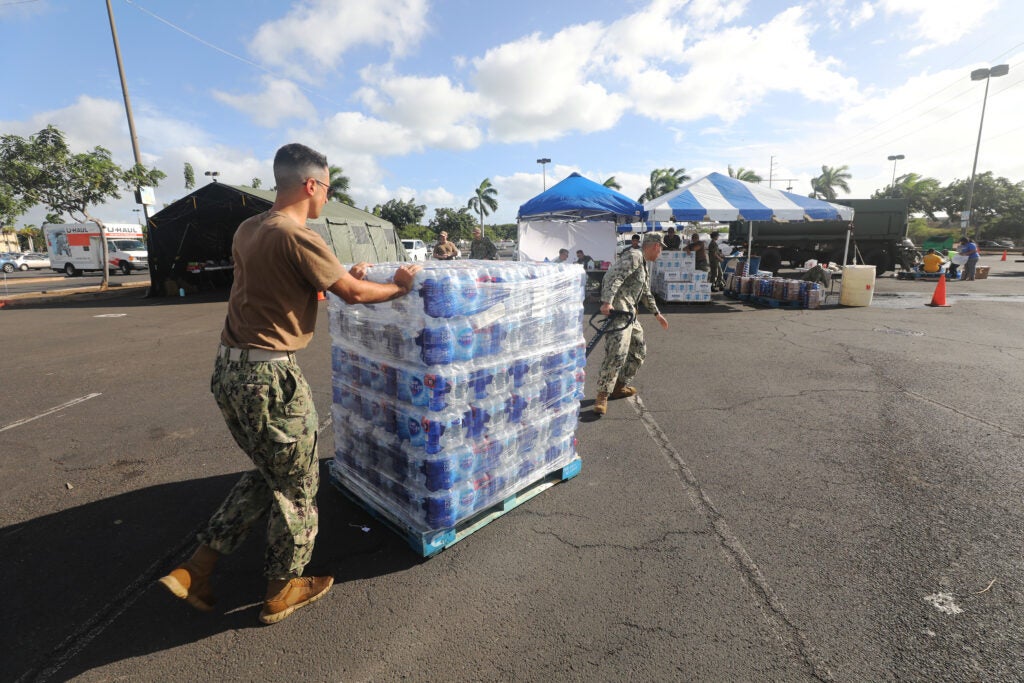
And by Dec. 16, they still hadn’t, in spite of numerous assurances from various officials that the update for parents would be sent out soon. Amanda, however, was told by her boss that the Navy decided they would replace those materials after they finished flushing operations to get rid of the contaminated water, which Amanda said didn’t make sense.
“Our [Child Development Centers] are being supplied with clean water now, right? We’re not even using the water that’s being flushed,” Amanda said. “So you’re putting clean water in porous materials that have been washed with previously-contaminated water, and you’re calling that safe? It doesn’t make any sense why you would wait until after the flushing operations.”
While it’s not impossible that things like sippy cups could be contaminated by the water, Heiger-Bernays said, children were probably at higher risk earlier in the month, when the Navy asked families to run the water in their homes for several minutes in order to “help move water through the system.” Running the water, or even being in the same room as standing water like that in a toilet, could have put people at increased risk for vapor inhalation, Heiger-Bernays said, and was likely “[increasing] the concentrations in the home.”
Finally, on Dec. 21, the deputy director of the Ford Island child development center sent an updated letter to parents. Despite the previous update on Dec. 8 saying that children had not been using tap water since Nov. 29, the new note said that staff “closely monitored the tap water” at the center for “any odors, sheens, or abnormalities,” and that water samples were collected on four different occasions between Dec. 3 and Dec. 11. The samples found that the water was “in full compliance with all state and federal action limits,” it said.
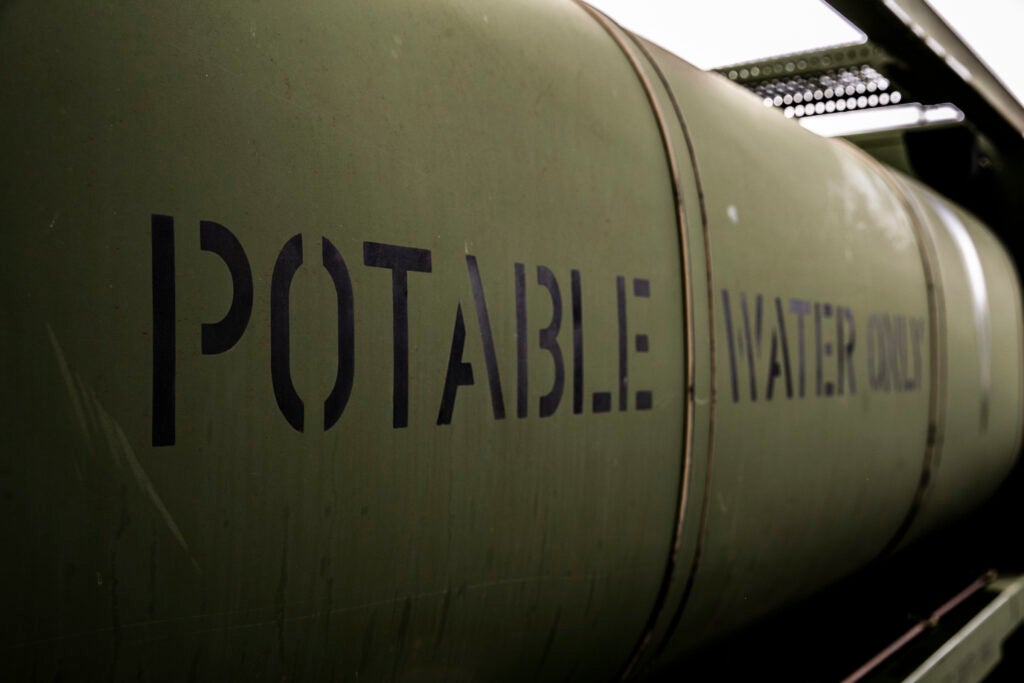
“Even though all tests show the tap water at the Ford Island CDC is unaffected, in an abundance of caution, on 9 December, the Ford Island CDC began to operate solely on bottled and delivered water in order to continue to provide a safe environment for your children,” the letter said. It did not mention that the Navy had previously, inaccurately claimed that bottled water was being delivered as of Nov. 29.
In a statement on Wednesday, the Navy confirmed that the child development centers have not been directed to get rid of porous materials — things like linens or towels — but said they are being washed by Naval Supply Systems Command. The Navy did not answer repeated questions asking how Ford Island was “verified” to be safe as the service said previously on Dec. 3. It also did not answer repeated questions asking if Ford Island was ever determined to have been impacted by contaminated water, or was considered to be safe, saying only that the service is “flushing all areas serviced by the Navy water system.”
But the damage has already been done for Amanda and her family. She said she’ll likely never trust the Navy’s assessment of water testing again, and while she and her family longed to live in Hawaii for much of her Army career, now they can’t wait to leave. While they were able to move to a hotel, Amanda said she knows other families can’t afford to pay upfront for lodging elsewhere.
“It’s tough because we love Hawaii, we love the people of Hawaii, we have dreamed to be stationed here. This is one of those bucket-list duty locations for as many places as we’ve been stationed,” she said. “But now we’re considering getting the hell out of here as quickly as possible.”
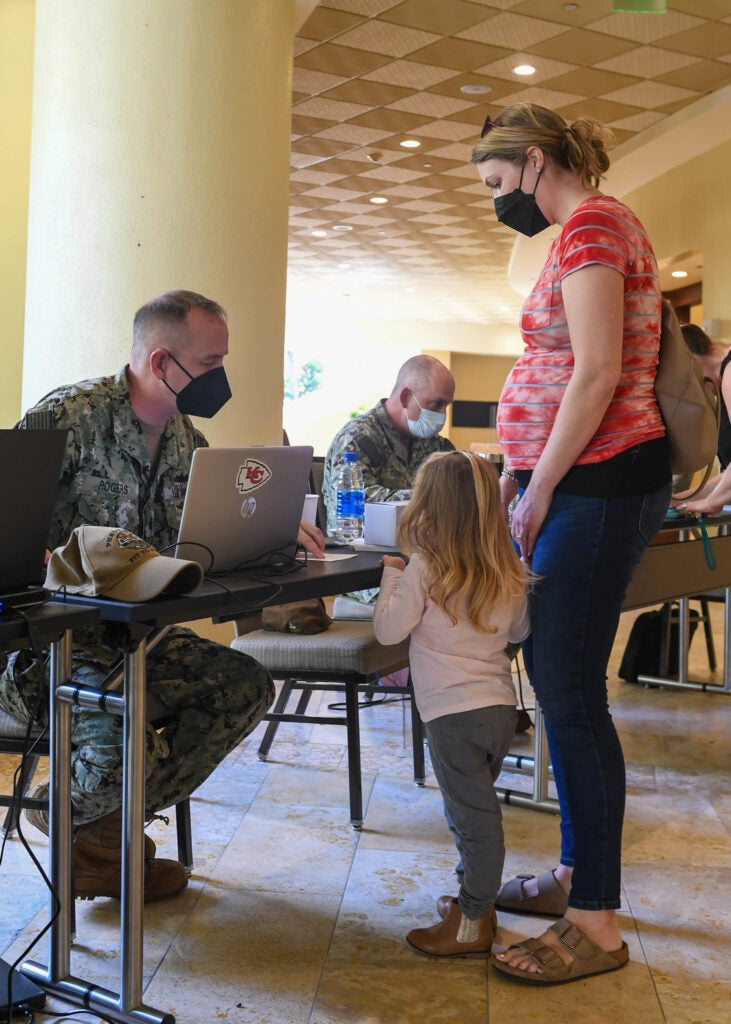
“Define ‘crisis’”
Today, the Army and Navy are continuing to flush the water system in an effort to dispose of the contaminated water, and get families back into their housing. The Army said Tuesday that a test result for the initial flush of one of its housing communities “did not meet the Environmental Protection Agency (EPA) and Hawaii Department of Health (DOH) standards for safe drinking water.”
But even when the water is eventually safe again, it’s only the beginning of the Navy’s problems. The service is facing a lawsuit from the Hawaii Department of Health, and private housing providers on the base are facing a class-action lawsuit from thousands of families. And on Tuesday, a team from the Centers for Disease Control and Prevention began surveying civilians to “investigate the potential health impacts” of their exposure to the water.
On Monday, Secretary of the Navy Carlos del Toro said in a statement that Navy families’ “health, safety, and well-being are priorities of the Department of the Navy,” and acknowledged the service had lost their trust.
“Your trust has been challenged with this past month’s drinking water contamination, and we know it is up to the Navy to repair that trust,” del Toro said. “We understand the hurt this has caused many of you, and we are committed to making it right.”

It was a stark difference from what another Navy official had said more than a week earlier. During a hearing on Dec. 22 with Hawaii Department of Health officials, James Bolacki, the deputy assistant secretary of the Navy for installations, energy, and facilities, denied that what military families were facing met the definition of “a crisis.”
“I just want to be clear that I understand your position,” said Ella Foley Gannon, who was representing the Honolulu Board of Water Supply. “Do you consider the events that have occurred at Red Hill to be a crisis?”
“Define ‘crisis,’” Bolacki said.
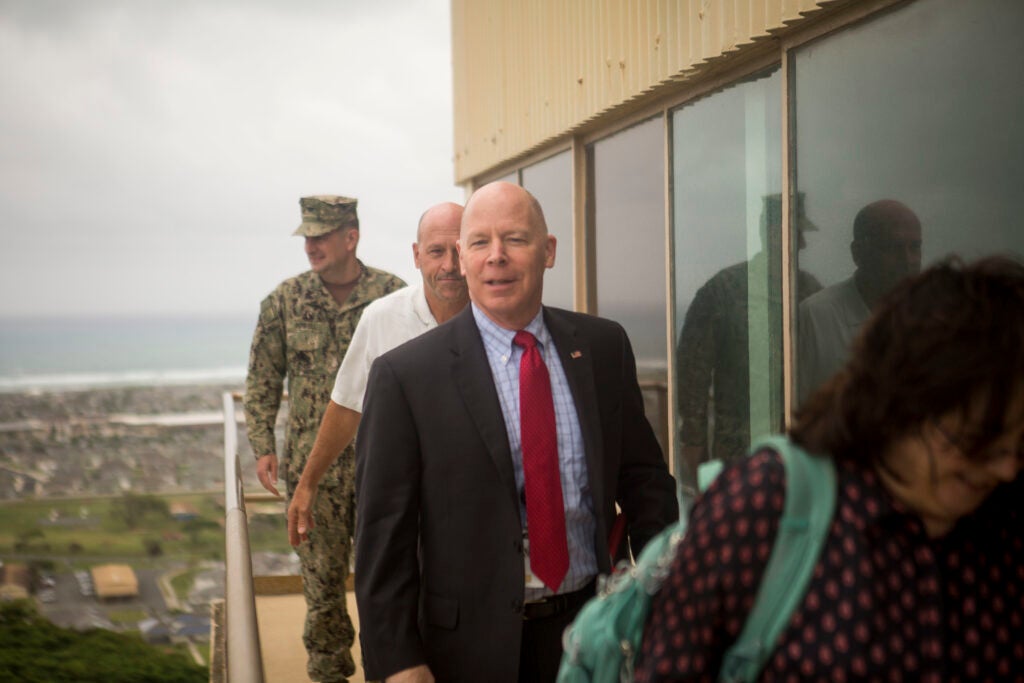
“I’m using it in the normal sense. Would you describe it as a crisis?”
“An urgent and compelling situation perhaps, not a crisis,” Bolacki replied. Gannon then read him the quote from a Dec. 10 briefing, in which Adm. Samuel Paparo referred to “the crisis that we are in right now, the water crisis. The Navy is responsible for this crisis.” She again asked Bolacki if he agreed with Paparo’s comments.
“I would describe a crisis as an imminent and compelling threat to human life,” Bolacki said. “I’ve been in combat, so I know what crisis looks like. This is a situation that can be remedied with the resources that have been brought to bear.”
Bolacki’s comments were immediately criticized by Rep. Kaiali‘i Kahele (D-Hawaii) who wrote in a letter to del Toro that he found “Bolacki’s comments, demeanor, and lack of awareness to be wholeheartedly inappropriate.”
Meredith Berger, the Assistant Secretary of the Navy for Energy, Installations and Environment, apologized to Kahele for Bolacki’s comments in a letter on Dec. 24. She “personally” spoke with Bolacki, she said, and he is “remorseful for his choice of words during the hearing.”
“Jim fully appreciates the pain his words have caused,” Berger wrote, “and he regrets that he did not reflect empathy or understanding for the substantial impact of this situation on both people and the environment.”
Although Bolacki may need more proof to determine the “compelling threat” consuming jet fuel poses to human life, many impacted families are concerned that proof may take time to develop. Experts differ on the long-term effects of consuming fuel because there is so little research on the matter, but the Centers for Disease Control and Prevention provides some insight to the severity of the situation.
Most everyone is exposed to some total petroleum hydrocarbon, the broader category of compounds found in the fuel leak and in gasoline or chemicals used at home, according to the CDC. But certain compounds of the chemical can cause headaches or dizziness, while others “can affect your central nervous system,” or cause a nerve disorder “consisting of numbness in the feet and legs.”
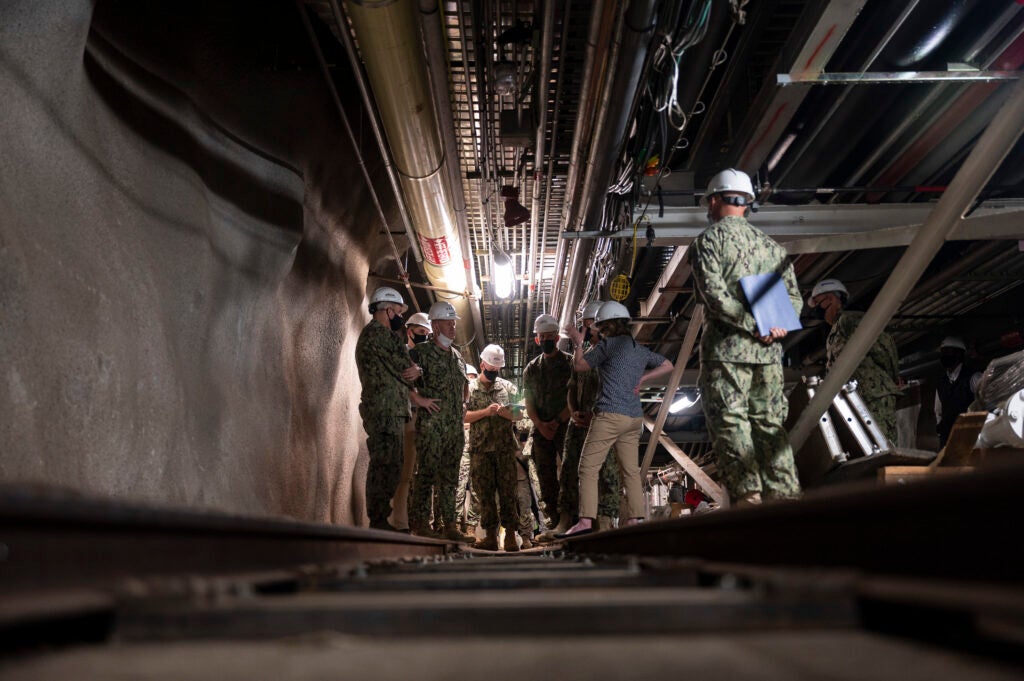
There are “a whole variety of outcomes” that could come from those exposures, Heiger-Bernays said, because of how many different compounds exist within total petroleum hydrocarbons. “These can range from effects on the gastrointestinal, the digestive system, blood-forming cells, the neurological system, and certainly irritations with the skin.”
Amanda and her husband say they are concerned that their daughter may face long-term effects. While her daughter previously had behavioral challenges they chalked up as a result of the Army lifestyle and regular moves and school changes, she’s now exhibiting signs of a deeper behavioral health problem that they are “very, very” concerned about.
When she was around the age of three, Amanda said, they had her tested for attention-deficit/hyperactivity disorder (ADHD). She “passed with flying colors,” Amanda said, and once they got her into speech therapy, things significantly improved. She’s been “good to go” ever since. But around the same time that the family saw their first symptoms of illness in early November, she started “reverting back,” and has since been officially diagnosed with ADHD. Amanda and her husband are worried it’s related to the water contamination.
“Full potty-trained, but she was having accidents at nap time. She started having these regressive behavior things where she was hitting, she was screaming, she was acting super defiant,” Amanda said. “Her attention was just all over the place, I mean far worse than we had ever dealt with when we first became alarmed around the age of three.”
Amanda and her husband wrote it off at the time as her acting out. But since then it has gotten progressively worse. And now that they are living in a hotel, it has become “almost unmanageable,” Amanda said, “to the point where it’s scary and all the tools that we’ve been given as parents … none of it is working.”
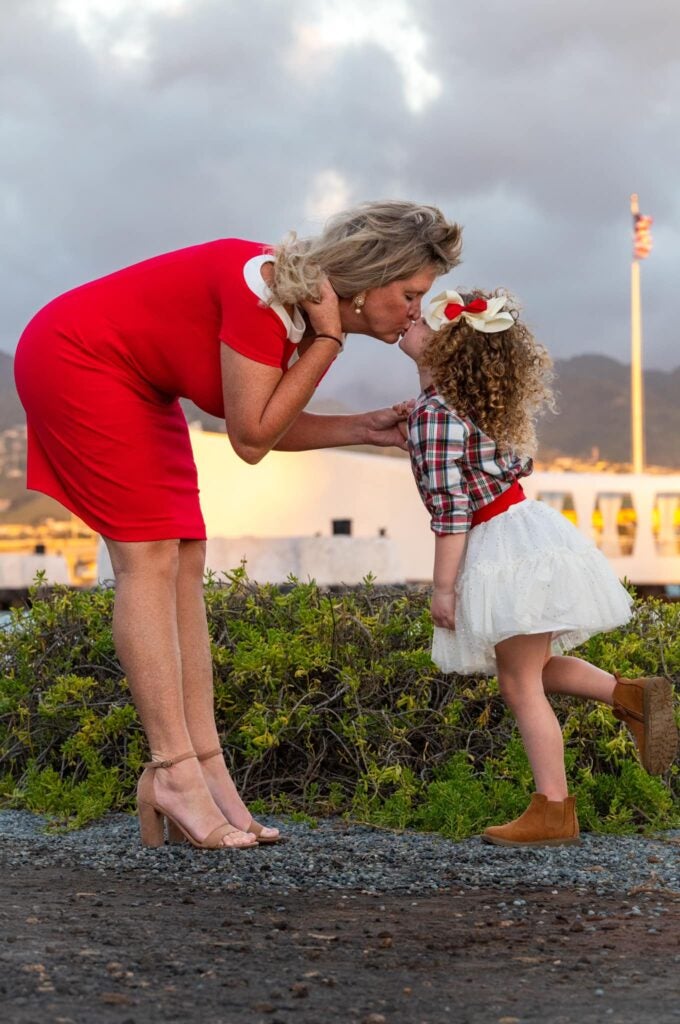
In late December, they visited their pediatrician and talked about her daughter’s outbursts. Amanda said they were told that in the “limited research” that exists on jet fuel exposure, some of the potential impacts are neurological. And when they called a behavioral health specialist following their doctor’s appointment, they learned they weren’t alone.
The specialist told the Feindts she’d received “several calls within that week” from parents with similar concerns, Amanda said. They scheduled an appointment and are hoping to get more answers, but it’s difficult to know the extent of their daughter’s exposure and trust the Navy’s timeline.
It’s also difficult to directly tie potential symptoms to the exposure. Nataile Exum, an assistant scientist of environmental health and engineering at the Johns Hopkins Bloomberg School of Public Health, said that’s one of the difficult things when it comes to contaminated water exposures.
“If this were my kid, I would be a bit more comforted that it was only a short period of time of known exposure, but this is scary stuff when you start looking at health effects of petroleum in drinking water,” Exum said. “I mean to be honest, will these parents ever know how this has impacted their kids and their immunological or their developmental growth? I mean I don’t think so.
“Like will the kids from Flint, Michigan, ever really know how much higher their IQs could have been had they not been exposed to lead? No, because these things take a really long time to develop.”
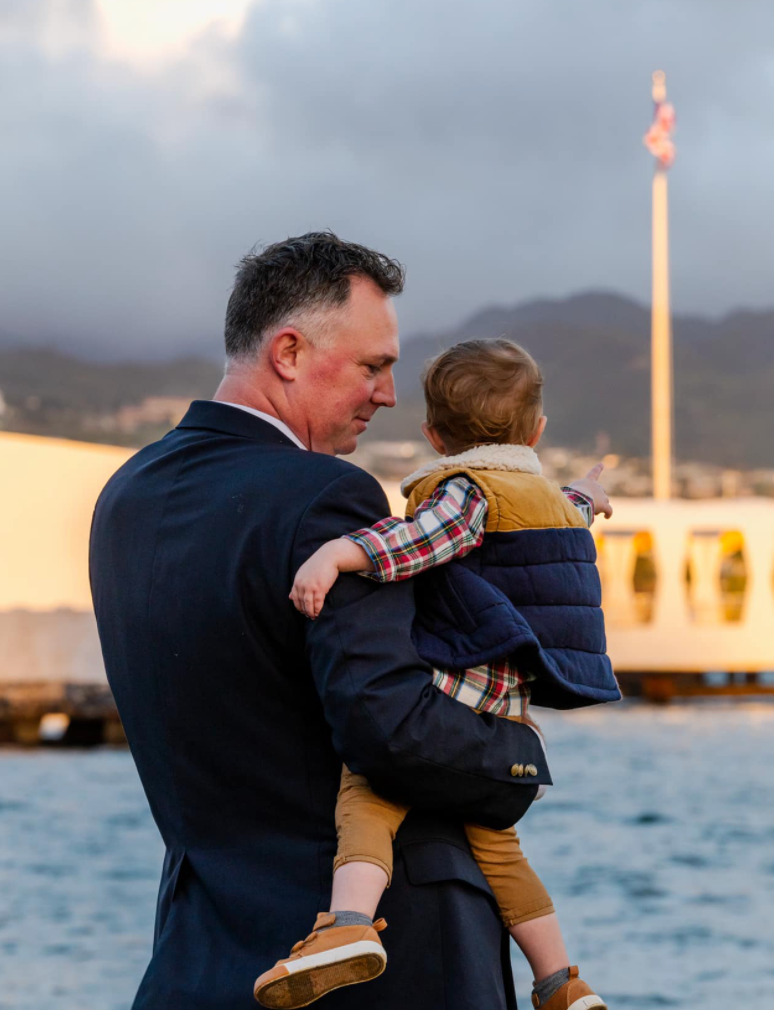
The Feindts had only been living in their home on Joint Base Pearl Harbor-Hickam since last spring, according to Amanda, but before all of this, they never had the kind of health issues they have now.
“My son didn’t have a chronic cough, and my husband never had issues with headaches, and we’re not people who typically get sick … it’s just really hard without all of the answers, to be able to fill in the blanks,” she said.
And that’s really what it all comes down to for Amanda and her family — getting answers so she can help her children, and be prepared for what could come next. She even wrote an open letter to Defense Secretary Lloyd Austin and his wife Chalene, who sits on the board of directors of the Military Family Advisory Network, pleading for help.
“[A]s a service member, I can not turn a blind eye to our military families suffering in silence,” she wrote, “and as a gracious tenant on this beautiful island, the people of Hawaii deserve better.”
Read more on Task & Purpose
Want to write for Task & Purpose? Click here. Or check out the latest stories on our homepage.
